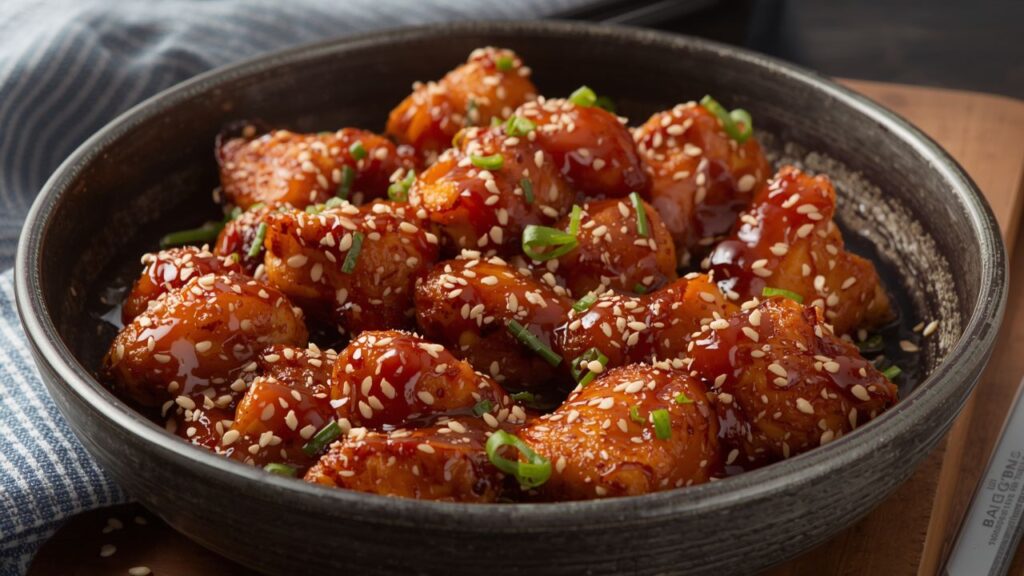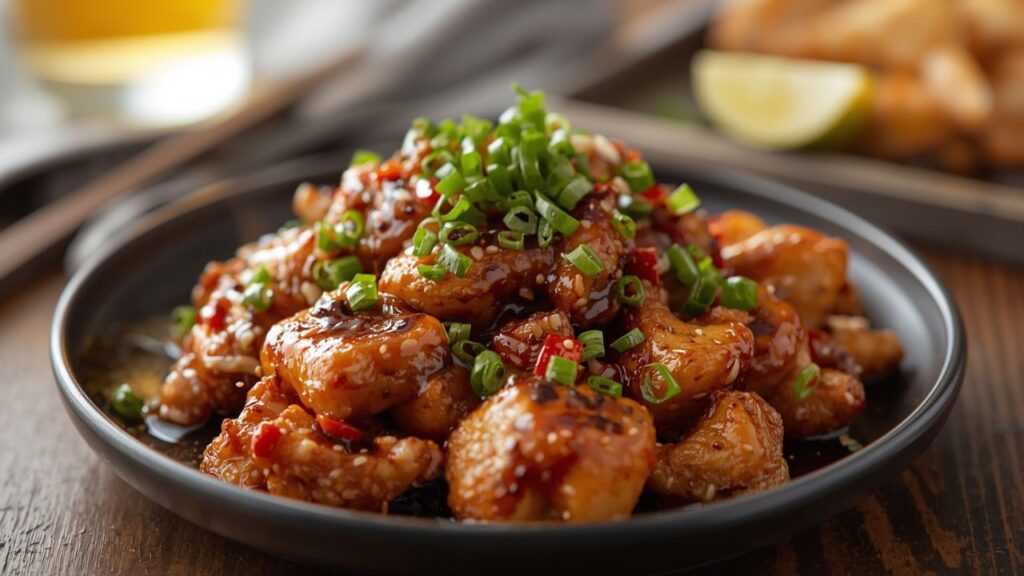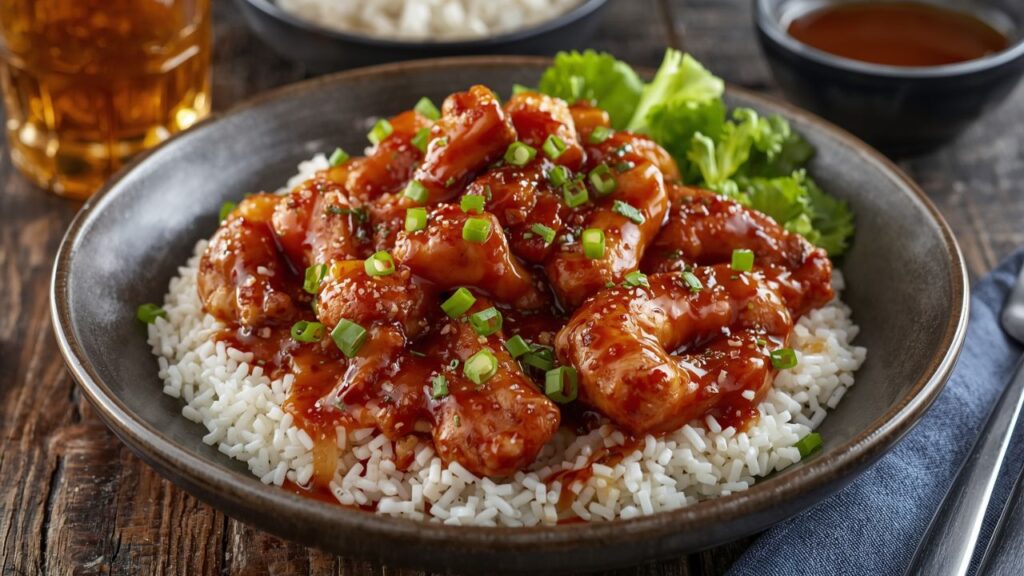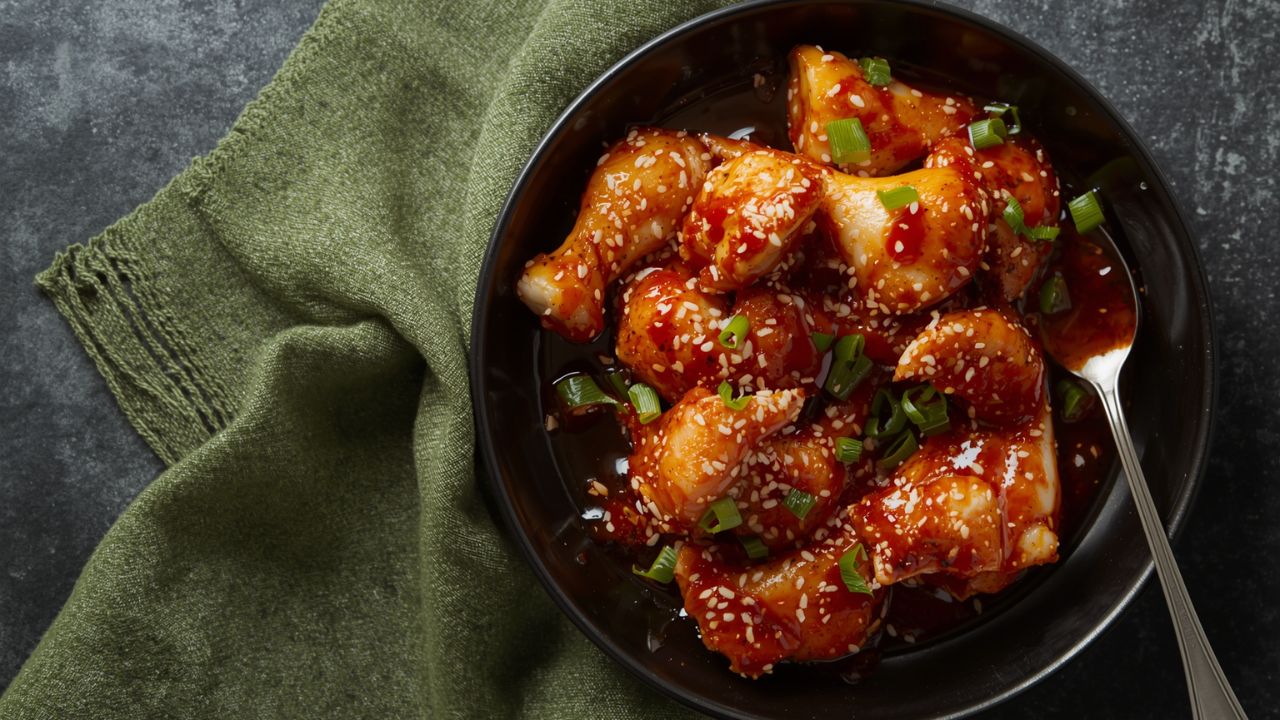What beer tastes like on a summer day is that sizzling marinated chicken on the grill, that sweet-salty in the air it is teriyaki at its finest. A fantastic teriyaki menu is not merely a list of dishes but it is your restaurant’s comfort cuisine. Whichever category of food establishment you run, a food truck, casual restaurant, or full-service restaurant, mastering your teriyaki products will create loyal customers based on taste. Modern consumers are interested in the traditional with a twist on modern variants: teriyaki cauliflower or glazed pineapple salmon. This guide will enable you to create the menu to balance the traditions with innovations, to keep your kitchen functioning and to have the customers returning due to that uncompromised taste of umami-sweet. Today we are going to make your teriyaki the center of the conversation!

Teriyaki Foundations
Genius teriyaki menu begins with mastering of the sauce itself. The authentic teriyaki uses four main ingredients, namely, good soy sauce to provide saltiness, mirin (sweet rice wine) that balances the saltiness, the depth is provided by sake, and the caramelization is provided by sugar. When these simmer down they turn in to a glistening, sticky glaze that makes ordinary proteins addictive and delicious. Japanese traditions keep it simple and teriyaki contemporary cookies will include garlic, ginger or even fruit juices such as pineapple juice in the richness. Note: balance is not negotiable. Too sweet? Add rice vinegar. Too salty? A pinch of mirin or honey mellows austerities. Once your base sauce is stellar, all the dishes in your teriyaki menu become the main event and patrons come back to get to them.
Building Your Core Teriyaki Offerings
Your teriyaki has to have solid bases that fulfil conventional appetites. Use boneless thighs of chicken- they are more juicy than their arid counterpart which is the chicken breasts. Grill a bit until lightly charred, ladle hot glaze on the top liberally. To make a classic bowl, prepare over short-grain rice that is steamed alongside broccoli. Beef teriyaki is fantastic on a finely sliced steak, flank steak or rib eye, cooked quickly so it does not toughen. Salmon fillets glazed during roasting have caramelized sides that are impossible to resist by lovers of seafood. And stars mustn?t be overlooked: Slabs of thick-cut tofu or portobello mushrooms will absorb sauce like a dream. Formulate these classics in an obvious section of your menu named as Teriyaki Favorites. Pro tip: Brand it with terms evoking appetite = Descriptive names make a plate look appetizing: OG Chicken Teriyaki Bliss, Umami Beef Glaze Bowl.
Elevating Your Teriyaki Selection
Classics form the foundation of your teriyaki menu, and new twists not only appeal to foodies but to social media buzz, as well. Experiment with teriyaki cauliflower steaks – thick slices roasted until soft, then coated with a sweet and savoury teriyaki coating, and a vegan sensational dish. Pineapple- pork skewers are a combination of tropical sweetness and soy taste. Teriyaki burgers incorporate ground pork or turkey with less sauce into the patty and onion that is pickled. Sushi burritos use nori sheets to roll teriyaki chicken, rice and avocado and cucumber together so they are quick to grab and eat meals. Breakfast is not left out as well with grain bowls made of teriyaki sausage with fried eggs and kimchi. Such innovative teriyaki meals should have their own menu category accompanied by exciting descriptions of unusual ingredients and methods of preparation to attract experimental customers.
Crafting Satisfying Teriyaki Bases
Instagram worthy, customizable bowls provide the full meal right in the bowl. Start with rice that is fresh and fluffy (white, brown, or cauliflower), then add the star as glazed protein on top. Add color by sprinkling on top with raw cut vegetables including steamed broccoli, snap peas or pickled cucumbers, to further add crunch.(Optional) A few sprinkles of sesame seeds or crunchy onions to get another texture. Rice does not require to be covered with the sauce to drown the ingredients. The bowl is then upgraded to additions of premium toppings such as avocado or hard-boiled eggs. These restaurant quality dishes when carefully placed will not only have a higher expense value, but will also ensure that the customers get satisfied with each bite.

Essential Sides & Add-Ons for Teriyaki Menus
An excellent teriyaki set prospers on the complimentary accompaniments that complete the dishes. Edamame in sea salt is a healthy easy starter. Miso soup provides a delicious appetizer of depth and warmth. Seaweed salad presents a fresh, briny flavor and bright color to break the richness of teriyaki. To satisfy the more robust palette, better alternatives are favorable, in the form of vegetable tempura or pork gyoza (dumplings), which provide the crispiness desired. And be sure not to omit the sauce add-ons: add spicy mayo, chili crunch oil, or doubling on teriyaki glaze to dip or pour. Package smartly – soup + salad + main is a “Teriyaki Combo” that holds the perception of worth. Ensure add on prices are clearly displayed ($1.50 for avocado, $2.99 extra protein) to increase average ticket size with ease and offer introductory prices to basic menu items.
Teriyaki Options for Everyone
The modern teriyaki menus have to address various diet options and needs with no compromises on taste. To accommodate gluten-free guests, replace regular soy sauce in your glaze with tamari, a gluten-free substitute of soy sauce- the difference in the taste is not much. Heavy appetites are satisfied with such vegan foods as grilled tofu, tempeh or king oyster mushrooms with liberal glazing. The low-carb/keto option diners prefer are teriyaki preparations over zucchini noodles, cabbage stir fry, or cauliflower rice instead of carb-containing grains. Cut down on sugar when possible with coconut aminos, or reduced mirin, to cater to the patients of health patrons. Addressing menus clearly in icons (�����������áv identity (◞ 326 Educating employees about reasons behind changes creates a sense of trust and makes you guarantee that all visitors walk out of your door having a positive experience.
Your Teriyaki Signature
No more bottled sauce – the sauces of the true teriyaki glory are in homemade glaze. Combine 1/2 cup of soy sauce, 1/4 cup- each mirin and sake, 3 tbsp of brown sugar, crushed clove of garlic and 1 tsp milled ginger. Place it over high heat, and boil for 10 minutes, until a bit syrupy. To stimulate, add gochujang, to sweeten a bit of pineapple juice or add fish sauce to add more. It is important to always cool before refrigerating, and to prepare afresh every few days. Pro tip: Put them in small bottles, people will always buy them to replicate your teriyaki food spell at home!

Maximizing Teriyaki Profitability
Smart pricing will make your teriyaki menu satisfying to your customers at the same time keeping the margins safe. Chicken bowls (food cost: 2.80-3.50) can be priced to 13-15 dollars. High-end proteins such as salmon ($4 -$5) are worthy of the 16-19 tag. Vegan bowls (price: $2.50-$3) are also fit at the price range of $12-$14. Bowl and soup or salad combos cost.50-2 more but create a value of 3-4 dollars. Psychological prices (ex. 14.95 instead of 15) and indicate Chef Specials when the item has a higher profit margin. Such limited-time offers (LTOs) as Mango Teriyaki Salmon induce a sense of urgency. Above all: measure waste. Pre-portion protein products and sauce to contain costs on a daily basis. The right selection of teriyaki satisfies the customers with full seats and busy kitchens.
Standard vs. Optimized Approach
| Feature | Standard Teriyaki Menu 🍱 | Optimized Teriyaki Menu 🔥 | Why the Upgrade Wins 🏆 |
| Sauce Foundation | Bottled commercial sauce | Daily-made glaze (soy, mirin, sake, fresh ginger) | Authentic flavor depth that customers taste instantly – becomes your signature |
| Protein Strategy | Only chicken breast | Thighs + salmon + tofu + beef | Juicier textures, wider appeal (85% of diners want variety*) |
| Menu Structure | Single list of bowls | Clear sections: Classics/Innovations/Bowls | Guides choices faster – 40% increase in upsell conversions with strategic grouping |
| Dietary Inclusion | “Ask server” disclaimers | Icon-labeled GF/Vegan/Keto options + tamari sauce | Builds trust – 1 in 3 diners prioritize dietary transparency |
| Profit Levers | Fixed-price combos | Strategic bundling (bowl + 2 sides = +$4) + premium add-ons (avocado, egg) | Boosts average ticket by 22% with perceived value |
| Ingredient Sourcing | Generic suppliers | Hyper-local highlights (“Soy sauce from [Local Brewery]”) | Story sells – 68% of diners pay more for traceable origins |
| Innovation Cycle | Rare menu changes | Monthly LTOs (e.g., Mango Teriyaki Skewers) + seasonal specials | Drives social buzz + 30% repeat visits from “fear of missing out” |
| Visual Appeal | Basic white rice + protein | Layered bowls (rice/colorful veg/sesame seeds/glaze drizzle) | Instagram fuel – 55% of millennials photograph food before eating |
Bringing Your Teriyaki Vision to Life
An Excellent Teriyaki Menu is both classic and modern with accommodating menus on all diets. Coach employees to tell stories about food (“Daily-simmered glaze and fresh ginger”). To display ingredients use colorful bowls. Plan Instagram-worthy food (#TeriyakiGlazeMagic) and to keep the customers motivated, rotate seasonal specials (such as summer peach-teriyaki pork). The most important one is to be consistent – no lumps in the sauce, light and fluffy rice, tender proteins always. In this way, your teriyaki will not be only a meal but a craving experience that enhances community.
Your Teriyaki Signature
All the wizardry the teriyaki cook creates in the glaze. Combine such a straightforward sauce of soy sauce, mirin, sake, brown sugar, and minced garlic and fresh ginger. Boil up and simmer for 10 minutes until thick and glossy. Do you want to create? Add a little gochujang to taste, a small amount of pineapple juice to sweeten or a bit of fish sauce to add a little bit of body to it. Nothing bottled should be used. It can never be so good. Pro tip: Pack your flourishes in super-small bottles and sell it to customers so that they can carry the taste back home.
FAQs
1. What is teriyaki sauce made from?
There are also genuine versions of slightly sweetened soy sauce, mirin (sweet rice wine), sake and sugar simmered to a glossy glaze. Ginger or garlic! that many cooks.
2. Are teriyaki bowls healthy?
They may! Swap meat or protein (chicken, tofu) with lean meat and vegetable, ask to provide a household less soy sauce or brown rice, and shun fried dishes.
3. Do you offer gluten-free teriyaki?
Yes! We make it with tamari (Gluten-Free soy sauce) in our glaze – Just ask when ordering.
4. Can I buy your teriyaki sauce?
Absolutely! Grab 8oz bottles ($5.99) from our counter & get ‘em online as well!
5. What’s your most popular teriyaki dish?
The OG Chicken Bowl gets hearts, but our Pineapple Pork Skewers are winning people’s hearts too!




